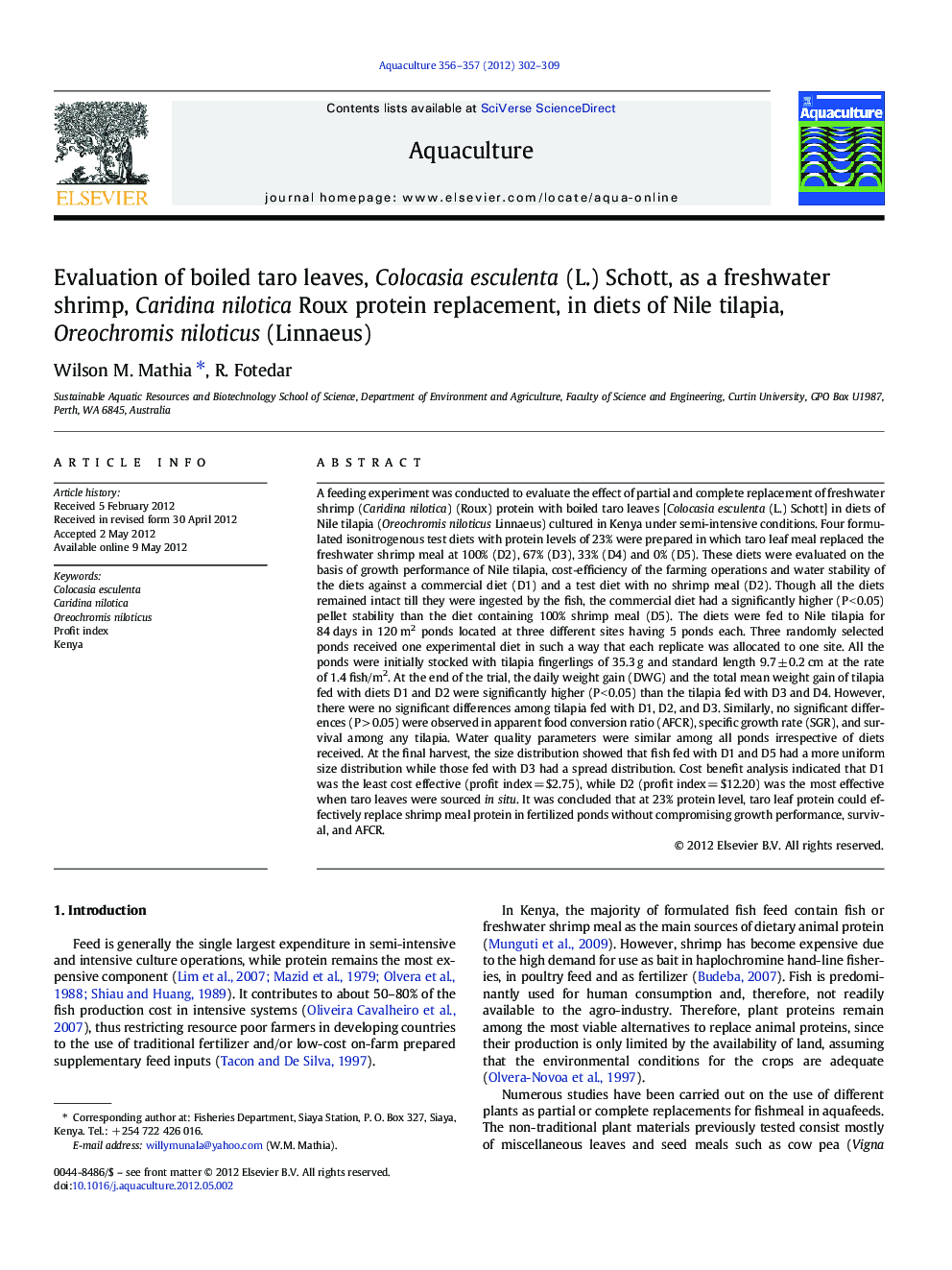| Article ID | Journal | Published Year | Pages | File Type |
|---|---|---|---|---|
| 2422578 | Aquaculture | 2012 | 8 Pages |
A feeding experiment was conducted to evaluate the effect of partial and complete replacement of freshwater shrimp (Caridina nilotica) (Roux) protein with boiled taro leaves [Colocasia esculenta (L.) Schott] in diets of Nile tilapia (Oreochromis niloticus Linnaeus) cultured in Kenya under semi-intensive conditions. Four formulated isonitrogenous test diets with protein levels of 23% were prepared in which taro leaf meal replaced the freshwater shrimp meal at 100% (D2), 67% (D3), 33% (D4) and 0% (D5). These diets were evaluated on the basis of growth performance of Nile tilapia, cost‐efficiency of the farming operations and water stability of the diets against a commercial diet (D1) and a test diet with no shrimp meal (D2). Though all the diets remained intact till they were ingested by the fish, the commercial diet had a significantly higher (P < 0.05) pellet stability than the diet containing 100% shrimp meal (D5). The diets were fed to Nile tilapia for 84 days in 120 m2 ponds located at three different sites having 5 ponds each. Three randomly selected ponds received one experimental diet in such a way that each replicate was allocated to one site. All the ponds were initially stocked with tilapia fingerlings of 35.3 g and standard length 9.7 ± 0.2 cm at the rate of 1.4 fish/m2. At the end of the trial, the daily weight gain (DWG) and the total mean weight gain of tilapia fed with diets D1 and D2 were significantly higher (P < 0.05) than the tilapia fed with D3 and D4. However, there were no significant differences among tilapia fed with D1, D2, and D3. Similarly, no significant differences (P > 0.05) were observed in apparent food conversion ratio (AFCR), specific growth rate (SGR), and survival among any tilapia. Water quality parameters were similar among all ponds irrespective of diets received. At the final harvest, the size distribution showed that fish fed with D1 and D5 had a more uniform size distribution while those fed with D3 had a spread distribution. Cost benefit analysis indicated that D1 was the least cost effective (profit index = $2.75), while D2 (profit index = $12.20) was the most effective when taro leaves were sourced in situ. It was concluded that at 23% protein level, taro leaf protein could effectively replace shrimp meal protein in fertilized ponds without compromising growth performance, survival, and AFCR.
► No significant difference when taro leaves completely replaced shrimp meal in diets. ► Diets containing taro leaf meal were most cost effective with highest cost index. ► At 23% protein level, taro leaves can replace shrimp protein in Nile tilapia diets. ► Poor farmers can use taro leaves from their farms as a cheap protein source.
